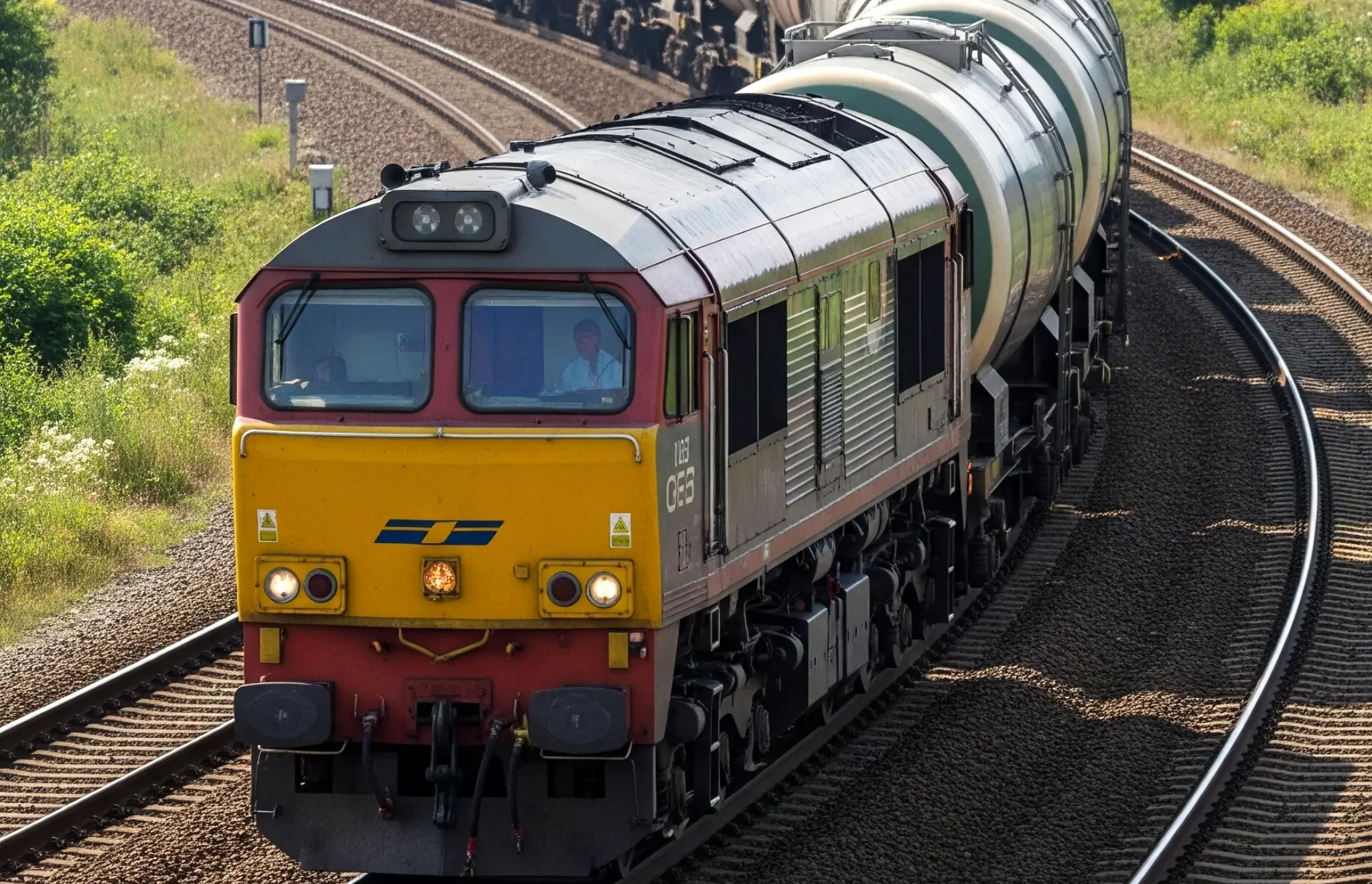Rail freight transport is among the key forms of cargo transportation. Rail transport has a long tradition and, despite technological progress in other sectors, remains a significant pillar of freight logistics.
Although rail freight transport is one of the key forms of cargo transport, it is not without disadvantages. Before looking at its benefits, it is important to highlight the main limitations and weaknesses it can encounter:
1. Short distances
Rail is unsuitable for transporting goods over short distances. In most cases, truck transport is faster, more flexible, and cheaper. There are exceptions, and sometimes companies may choose rail transport even for short distances.
If a shipper needs to send 2,000 tons of goods at once and their facility is connected to the rail network via a siding, and the recipient has the personnel and technology for unloading, rail can be considered. Transporting 2,000 tons of goods at 24 tons per truck would require about 83 trucks. Getting that many trucks at once is difficult or impossible. However, such scenarios are very rare.
2. Urgent shipments
Rail freight is extremely unsuitable for this type of shipment. In urgent cases where time is critical, it is always better to use truck or air transport.
3. Small quantities
Rail transport is not economically advantageous for small volumes of goods. Running a train requires filling a certain capacity to keep the price per ton competitive. For smaller shipments, road transport is more efficient, as it allows more flexible planning and the collection of smaller loads from multiple shippers. Moreover, rail companies often prefer larger volumes, as handling individual pieces or small pallet shipments is organizationally and financially demanding.
4. Places without rail infrastructure
As mentioned in the scenario above, connection to the rail infrastructure by a siding is an important aspect that can determine the profitability of transport. If the recipient does not have a siding, the goods must be transferred to trucks at the nearest terminal. Every handling of goods means additional costs.
Again, there is an exception if the goods travel long distances. Then it is worth considering whether the lower costs of the long rail journey compensate for the additional handling costs. A good freight forwarder should assess this alternative for long-distance shipments.
5. Transport of goods with special requirements and high-value goods
This includes frozen, chilled, or perishable goods. Movement of goods by rail is slow compared to other methods. While it is often possible to provide the necessary conditions, it is usually uneconomical.
It is also not recommended to transport very valuable goods by rail if they can be easily stolen. Wagons move between stations and travel for a relatively long time, increasing the risk of theft.
If you have read this far, it is likely you will find yourself in the following points. Now we will present situations when you should choose rail transport:
1. Large transport capacity
Only sea transport offers greater capacity. For example, at the beginning of the year, a train from Poland to the Czech Republic delivered 3,067 tons of material. Transporting 3,067 tons would require 125 trucks on this route.
2. Speed
This term is relative. Rail will never be faster than truck transport, and certainly not faster than air. However, it is significantly faster than sea transport. On the route from China to the EU, rail is more than twice as fast as sea transport.
3. Safety
Rail is among the safest modes of transport, with minimal accidents and low risk of damage or loss of goods. While thefts do occur, they are not as frequent or as damaging as those caused by phantom carriers in road transport. Thefts usually involve fuel, iron, or copper from wagons in tens or hundreds of kilograms. High-value goods like consumer electronics are now rarely transported by rail. In terms of accident rates, truck transport cannot match rail.
4. Environmental impact
Rail freight is one of the greenest options for transporting goods. Compared to road or air transport, rail produces significantly fewer emissions and has a lower negative impact on air, soil, and water.
Currently, companies across the European Union face increasing pressure to reduce environmental impact and shift to more sustainable transport. The EU, through climate policies, is tightening emission reduction requirements and promoting ecological alternatives in logistics. Even if rail is sometimes less economically efficient than road, its environmental benefits and compliance with legislation can be decisive factors for companies. Choosing rail makes sense not only for environmental protection but also for long-term sustainability and company reputation.
Choosing the right mode of transport always depends on individual needs, the specifics of the goods, and customer expectations. Rail freight has clear advantages, especially for large volumes, long distances, and situations where safety and ecological responsibility are priorities.
As a freight forwarding company focused on rail transport, we can help you assess whether this method is optimal for your needs. Our task is not only to arrange the transport itself but also to propose the most effective solution considering costs, time, and environmental requirements. If you are considering rail freight, we are happy to prepare an individual offer and assist with logistics from start to finish.
Team iCargo
